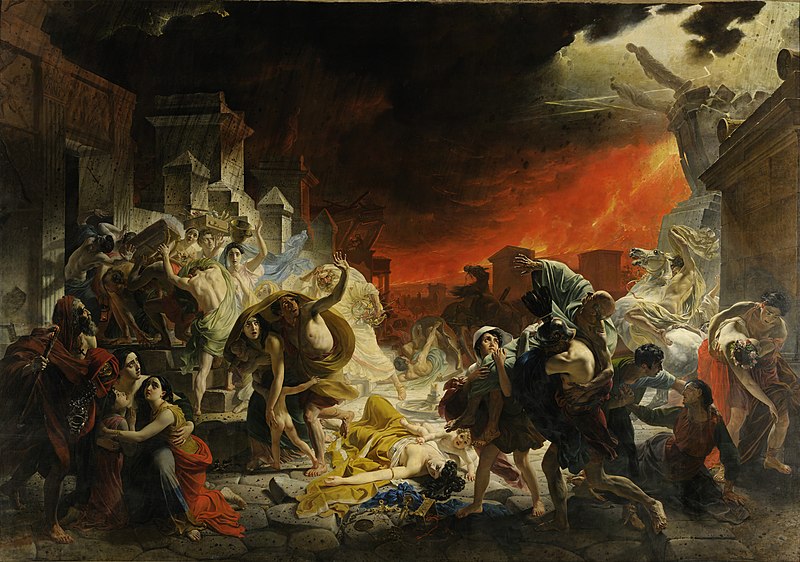人物>リットン
これは、Prince Vladimir Fedorovich Odoevsky (1803-1869) の未完の短編小説「4338-й год (The Year 4338)」のモチーフとなったと考えられている絵画。
これは、Prince Vladimir Fedorovich Odoevsky (1803-1869) の未完の短編小説「4338-й год (The Year 4338)」のモチーフとなったと考えられている絵画。
Karl Briullov:"The Last Days of Pompeii" (painting), 1830-1834
The Last Day of Pompeii is a large history painting by Karl Bryullov produced in 1830–1833 on the subject of the eruption of Mount Vesuvius in AD 79. It is notable for its positioning between Neoclassicism, the predominant style in Russia at the time, and Romanticism as increasingly practised in France. The painting was received to near universal acclaim and made Bryullov the first Russian painter to have an international reputation. In Russia it was seen as proving that Russian art was as good as art practised in the rest of Europe. It inspired Edward Bulwer-Lytton's world famous novel The Last Days of Pompeii. Critics in France and Russia both noted, however, that the perfection of the classically modelled bodies seemed to be out of keeping with their desperate plight and the overall theme of the painting, which was a Romantic one of the sublime power of nature to destroy man's creations.
『ポンペイ最後の日』は、カール・ブリュロフがAD79年のヴェスヴィオ山噴火を題材に1830年から1833年にかけて制作した大型歴史画である。当時ロシアで主流であった新古典主義と、フランスで盛んに行われるようになったロマン主義の間に位置する作品として注目されている。この作品はほぼ全世界で評価され、ブリュロフはロシア人画家として初めて国際的な名声を得ることになった。ロシアでは、ロシア美術がヨーロッパの他の地域で行われている美術に匹敵するものであることを証明するものと見なされていた。この作品は、エドワード・ブルワー・リットンの世界的に有名な小説「ポンペイ最後の日」にインスピレーションを与えた。しかし、フランスとロシアの批評家は、古典的なモデルによる完璧な身体は、彼らの絶望的な窮状や、人間の創造物を破壊する自然の崇高な力というロマン派の画題にそぐわないように思われると指摘した。
[ wikipedia: The Last Days of Pompeii ]



コメントをかく